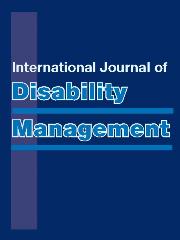Article contents
Competencies and Tasks of Disability Management Professionals in Germany
Published online by Cambridge University Press: 23 February 2012
Abstract
Demographic changes are transforming Germany's working environment. A shrinking and aging workforce is having to cope with rising market requirements for skilled labour. As the risk of occupational disability rises with age, lawmakers have introduced a number of legislative changes to sustain workers' ability to work as long as possible. Another important step in this direction was the introduction of a training program to become a Certified Disability Management Professional (CDMP), based on the Canadian model and driven by the German Social Accident Insurance (DGUV). International scientific research has long recognised the importance of professional counselling and support for successful vocational rehabilitation of sick and disabled people. In Germany, however, there has been a lack of studies investigating which competencies disability managers need for their work or whether their training is adequate. The present study fills this gap. 217 disability managers and other vocational rehabilitation professionals were asked about their tasks and the competencies required for their work. Two important areas of responsibility were identified: work with the client, on the one hand, and organisational and managerial tasks on the other. This represents a lower degree of specialisation than that found in related American or Australian studies. Possible reasons for these differences are discussed.
Information
- Type
- Articles
- Information
- International Journal of Disability Management , Volume 5 , Issue 2 , 01 December 2010 , pp. 67 - 72
- Copyright
- Copyright © Cambridge University Press 2010
- 8
- Cited by

